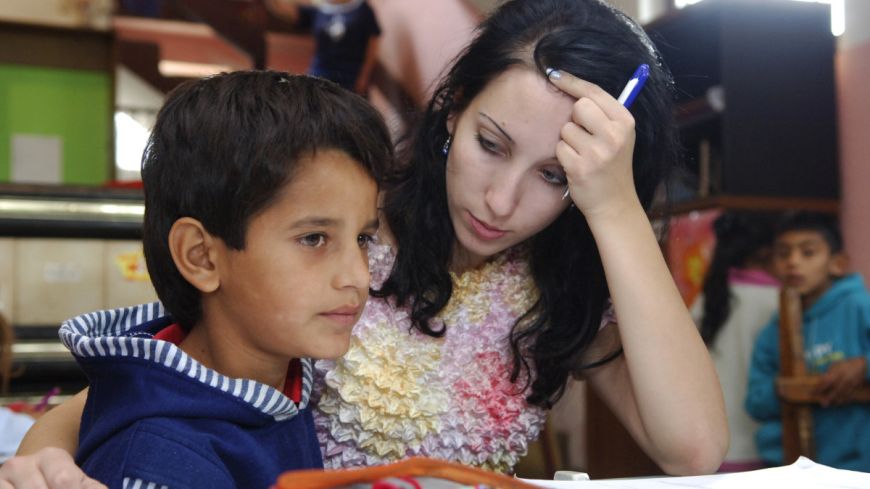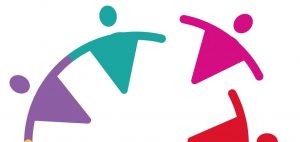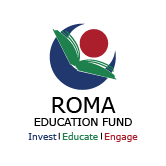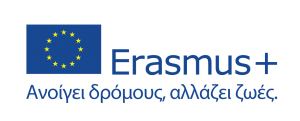Αρχική » Roma Inclusion
Αρχείο κατηγορίας Roma Inclusion
Results
Final results
Guide for Roma Inclusion in PDF
Gymnasio Zipariou 2020-1-EL01-KA201-078810 GUIDE BG
Gymnasio Zipariou 2020-1-EL01-KA201-078810 GUIDE EL
Gymnasio Zipariou 2020-1-EL01-KA201-078810 GUIDE EN
Gymnasio Zipariou 2020-1-EL01-KA201-078810 GUIDE ES
Gymnasio Zipariou 2020-1-EL01-KA201-078810 GUIDE IT
Gymnasio Zipariou 2020-1-EL01-KA201-078810 GUIDE PT
Gymnasio Zipariou 2020-1-EL01-KA201-078810 GUIDE HU
Guide for Roma Inclusion In Word
2020-1-EL01-KA201-078810 Roma students’ inclusion Guide PART A_BG
2020-1-EL01-KA201-078810 Roma students’ inclusion Guide PART B_BG
2020-1-EL01-KA201-078810 Roma students’ inclusion Guide PART A_EL
2020-1-EL01-KA201-078810 Roma students’ inclusion Guide PART B_EL
2020-1-EL01-KA201-078810 Roma students’ inclusion Guide PART A_EN
2020-1-EL01-KA201-078810 Roma students’ inclusion Guide PART B_EN
2020-1-EL01-KA201-078810 Roma students’ inclusion Guide PART A_ES
2020-1-EL01-KA201-078810 Roma students’ inclusion Guide PART B_ES
2020-1-EL01-KA201-078810 Roma students’ inclusion Guide PART A_IT
2020-1-EL01-KA201-078810 Roma students’ inclusion Guide PART B_IT
2020-1-EL01-KA201-078810 Roma students’ inclusion Guide PART A_PT
2020-1-EL01-KA201-078810 Roma students’ inclusion Guide PART B_PT
2020-1-EL01-KA201-078810 Roma students’ inclusion Guide PART A_HU
2020-1-EL01-KA201-078810 Roma students’ inclusion Guide PART B_HU
Photos from Roma life in partner countries
Gymnasio Zipariou 2020-1-EL01-KA201-078810 Photos
For more results from the project, visit Erasmus platform here
TPM 3 Kos Models Shaping REF Interventions
REF has extensive experience and knowledge surrounding the types of interventions in and approaches to Roma education. REF currently structures its grants around five good practice models for achieving impact in different countries and policy settings.
Embedding effective models for Roma education requires strong partnerships with national and local education authorities and implies intense communication with them throughout the process of adjusting best practice models to national and local contexts.
Expanding Access to Preschool Education: Early Childhood Education
REF’s early childhood education model aims to improve the school readiness and early childhood development outcomes of Romani children under age six by improving the enrollment and attendance in the mainstream preschool services; enhancing the parenting skills and improving the practices of Romani parents; strengthening the link between parents and preschool and kindergarten facilities; and raising the quality of early childhood education services, such as teaching and learning methods.
Avoiding Early School Leaving in Primary Education
The primary education model intends to improve the primary education outcomes of Romani children aged between six and fourteen by supporting primary education enrollment and school-after-school programs (tutoring and mentoring) with improved access (enrollment) to primary education, preventing early school leaving, enhancing parental skills, and strengthening the link between parents and schools, providing remedial classes to children and offering professional support and guidance to school staff and authorities.
Expanding Access to Secondary Education
The secondary education model aims to improve the academic performance of students and to maintain the retention and graduation rate of Romani secondary school students through better outreach, provision of scholarships, school-based mentorship support and tutorship support.
Expanding Access to Higher Education
The higher education model includes the component of RomaVersitas, a program intended to improve the retention, performance and graduation levels of Romani full-time tertiary education students. RomaVersitas provides academic tutoring and mentoring to help strengthen students’ Romani identity and community participation. This model consists of compulsory and optional components. It serves as a bridge for young Romani scholars and includes scholarships, mentoring, tutoring and additional training in professional development and foreign language competences.
Second Chance Programs for Adult Functional Literacy and Formal School Completion
The adult education and training model aims to improve the education level and employment prospects for young Romani adults. It provides those with incomplete primary and/or secondary education with tutoring and financial support for completing formal primary and/or secondary education. This model also aims to improve the literacy and social communication skills of illiterate and semi-literate Romani parents (mainly mothers) of preschool- and school-age children and enhance their involvement in their children’s education through provision of non-formal literacy and social communication skills trainings.
Roma in Portugal
Presentations about Roma in the area and the educational system during the LTTA in Portugal at the partner school Agrupamento de Escolas de S. João da Talha
Portugal Guide for Roma in Education
Presentation about the school Agrupamento de Escolas de S. João da Talha practices together with Municipality
Presentation at TPM 3 Kos Greece Education of Roma Children

The Council of Europe began its involvement with the Roma in 1969 by adopting the first official text on the “situation of Gypsies and other Travellers in Europe”. In 1983 the Council organised the first training seminar for teachers working with Roma children. In 1993 the Roma population was declared a European minority. (περισσότερα…)
The Roma strategy of association “Testvérvárosok Baráti Egyesülete” Hungary
The Roma strategy of association “Testvérvárosok Baráti Egyesülete”, related to support of Roma families
The city of Jászberény has nine twin cities, it means that the different activities of the association are strongly connected to the activities of all the twin cities. Four of them have larger Roma communities.
These are:
1./ Sucha Beskidzka (Poland),
2./ Conselve (Italy)
3./ Gyimesfelsőlok (Romania)
4./ Nitra (Slovakia)
We regularly exchange experiences with the educational institutions and civil organizations of the four twin cities regarding the support of Roma students and families.
The Gypsy population moved to Europe from India approx. 700 years ago. It was the “lowest”, poorest caste, which was divided into several strata, consisting of horse traders and tinsmiths. The musical gypsies were a separate class. The poorest made up the “tented” gypsies, who constantly travelled with their horse-drawn carts. This was typical for Hungary as well.
There are just few typical family models, the most relevant characteristics of them are the casual labor and giving birth to many children. As a result, their family model hardly changed, which was a cohesive closed community with many children. The children typically continued the family life they saw from their parents. They didn’t go to school, they got married early, they gave birth to children at the age of 14-16, due to this fact there were 6-10 children in a family. (περισσότερα…)
Open your mind 1 – go beyond prejudice!
Using a feline metaphor to dispel Roma stereotypes
There are nearly 10 million Roma living in the 47 member states of the Council of Europe. They suffer from widespread sterotyping, prejudice and discrimination. This video, aimed mainly at children, uses the metaphor of a black cat, which is discriminated because of its association with witchcraft and bad luck. It urges children to confront similarly irrational Roma-related prejudices held by adults, with the aim of better integrating Roma people in mainstream society.
Watch the video at
https://www.coe.int/en/web/human-rights-channel/-/open-your-mind-go-beyond-prejudice-
Open your mind 2- go beyond stereotypes!
There are nearly 10 million Roma living in the 47 member states of the Council of Europe. They suffer from widespread sterotyping and prejudice. In order to open our minds to their true situation we need to start teaching the reality in schools. This video, aimed mainly at children, deals with some common misconceptions concerning the Roma, through the scenario of a teacher addressing a class of pupils with a series of questions. For example, he asks them what kind of jobs they think Roma do, and which part of the world they came to Europe from.
Watch the video at
https://www.coe.int/en/web/human-rights-channel/-/open-your-mind-go-beyond-stereotypes-
Roma in Italy
Presentations of IPALBTUR about Roma in the area and educational practices for their inclusion
IT Presentation of School Ipalb Tur
IT Real opportunities for ROMA students








